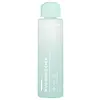What's inside
What's inside
 Key Ingredients
Key Ingredients

 Benefits
Benefits

 Concerns
Concerns

No concerns
 Ingredients Side-by-side
Ingredients Side-by-side

Phenoxyethanol
PreservativeRaspberry Seed Oil/Palm Oil Aminopropanediol Esters
Skin ConditioningFructose
HumectantOpuntia Ficus-Indica Stem Extract
Skin ConditioningWithania Somnifera Root Extract
Skin ConditioningCeramide 3
Skin ConditioningOpuntia Tuna Fruit Extract
Skin ConditioningWater
Skin ConditioningHydroxyethyl Acrylate/Sodium Acryloyldimethyl Taurate Copolymer
Emulsion StabilisingCaprylic/Capric Triglyceride
MaskingPropanediol
SolventGlycerin
HumectantEthylhexylglycerin
Skin ConditioningDisodium EDTA
Sorbitan Isostearate
EmulsifyingPolysorbate 60
EmulsifyingMaltodextrin
AbsorbentCitric Acid
BufferingDisodium Phosphate
BufferingSodium Hydroxide
BufferingPotassium Sorbate
PreservativePhenoxyethanol, Raspberry Seed Oil/Palm Oil Aminopropanediol Esters, Fructose, Opuntia Ficus-Indica Stem Extract, Withania Somnifera Root Extract, Ceramide 3, Opuntia Tuna Fruit Extract, Water, Hydroxyethyl Acrylate/Sodium Acryloyldimethyl Taurate Copolymer, Caprylic/Capric Triglyceride, Propanediol, Glycerin, Ethylhexylglycerin, Disodium EDTA, Sorbitan Isostearate, Polysorbate 60, Maltodextrin, Citric Acid, Disodium Phosphate, Sodium Hydroxide, Potassium Sorbate
Water
Skin ConditioningMethylpropanediol
SolventButylene Glycol
HumectantPropylene Glycol
HumectantPanthenol
Skin ConditioningAloe Barbadensis Leaf Extract
EmollientCentella Asiatica Extract
CleansingPolygonum Cuspidatum Root Extract
AntioxidantScutellaria Baicalensis Root Extract
AstringentCamellia Sinensis Leaf Extract
AntimicrobialGlycyrrhiza Glabra Root Extract
BleachingChamomilla Recutita Flower Extract
MaskingArtemisia Capillaris Extract
Rosmarinus Officinalis Leaf Extract
AntimicrobialGlycerin
Humectant1,2-Hexanediol
Skin ConditioningOpuntia Ficus-Indica Extract
Skin ConditioningSodium Hyaluronate
HumectantTetrapeptide-44
Skin ConditioningPentylene Glycol
Skin ConditioningCaprylyl Glycol
EmollientEthylhexylglycerin
Skin ConditioningPhenoxyethanol
PreservativeHydroxyethylcellulose
Emulsion StabilisingDipotassium Glycyrrhizate
HumectantDisodium EDTA
Sodium Nitrate
SoothingGlyoxal
AntimicrobialWater, Methylpropanediol, Butylene Glycol, Propylene Glycol, Panthenol, Aloe Barbadensis Leaf Extract, Centella Asiatica Extract, Polygonum Cuspidatum Root Extract, Scutellaria Baicalensis Root Extract, Camellia Sinensis Leaf Extract, Glycyrrhiza Glabra Root Extract, Chamomilla Recutita Flower Extract, Artemisia Capillaris Extract, Rosmarinus Officinalis Leaf Extract, Glycerin, 1,2-Hexanediol, Opuntia Ficus-Indica Extract, Sodium Hyaluronate, Tetrapeptide-44, Pentylene Glycol, Caprylyl Glycol, Ethylhexylglycerin, Phenoxyethanol, Hydroxyethylcellulose, Dipotassium Glycyrrhizate, Disodium EDTA, Sodium Nitrate, Glyoxal
Ingredients Explained
These ingredients are found in both products.
Ingredients higher up in an ingredient list are typically present in a larger amount.
Disodium EDTA plays a role in making products more stable by aiding other preservatives.
It is a chelating agent, meaning it neutralizes metal ions that may be found in a product.
Disodium EDTA is a salt of edetic acid and is found to be safe in cosmetic ingredients.
Learn more about Disodium EDTAEthylhexylglycerin (we can't pronounce this either) is commonly used as a preservative and skin softener. It is derived from glyceryl.
You might see Ethylhexylglycerin often paired with other preservatives such as phenoxyethanol. Ethylhexylglycerin has been found to increase the effectiveness of these other preservatives.
Glycerin is already naturally found in your skin. It helps moisturize and protect your skin.
A study from 2016 found glycerin to be more effective as a humectant than AHAs and hyaluronic acid.
As a humectant, it helps the skin stay hydrated by pulling moisture to your skin. The low molecular weight of glycerin allows it to pull moisture into the deeper layers of your skin.
Hydrated skin improves your skin barrier; Your skin barrier helps protect against irritants and bacteria.
Glycerin has also been found to have antimicrobial and antiviral properties. Due to these properties, glycerin is often used in wound and burn treatments.
In cosmetics, glycerin is usually derived from plants such as soybean or palm. However, it can also be sourced from animals, such as tallow or animal fat.
This ingredient is organic, colorless, odorless, and non-toxic.
Glycerin is the name for this ingredient in American English. British English uses Glycerol/Glycerine.
Learn more about GlycerinPhenoxyethanol is a preservative that has germicide, antimicrobial, and aromatic properties. Studies show that phenoxyethanol can prevent microbial growth. By itself, it has a scent that is similar to that of a rose.
It's often used in formulations along with Caprylyl Glycol to preserve the shelf life of products.
Water. It's the most common cosmetic ingredient of all. You'll usually see it at the top of ingredient lists, meaning that it makes up the largest part of the product.
So why is it so popular? Water most often acts as a solvent - this means that it helps dissolve other ingredients into the formulation.
You'll also recognize water as that liquid we all need to stay alive. If you see this, drink a glass of water. Stay hydrated!
Learn more about Water